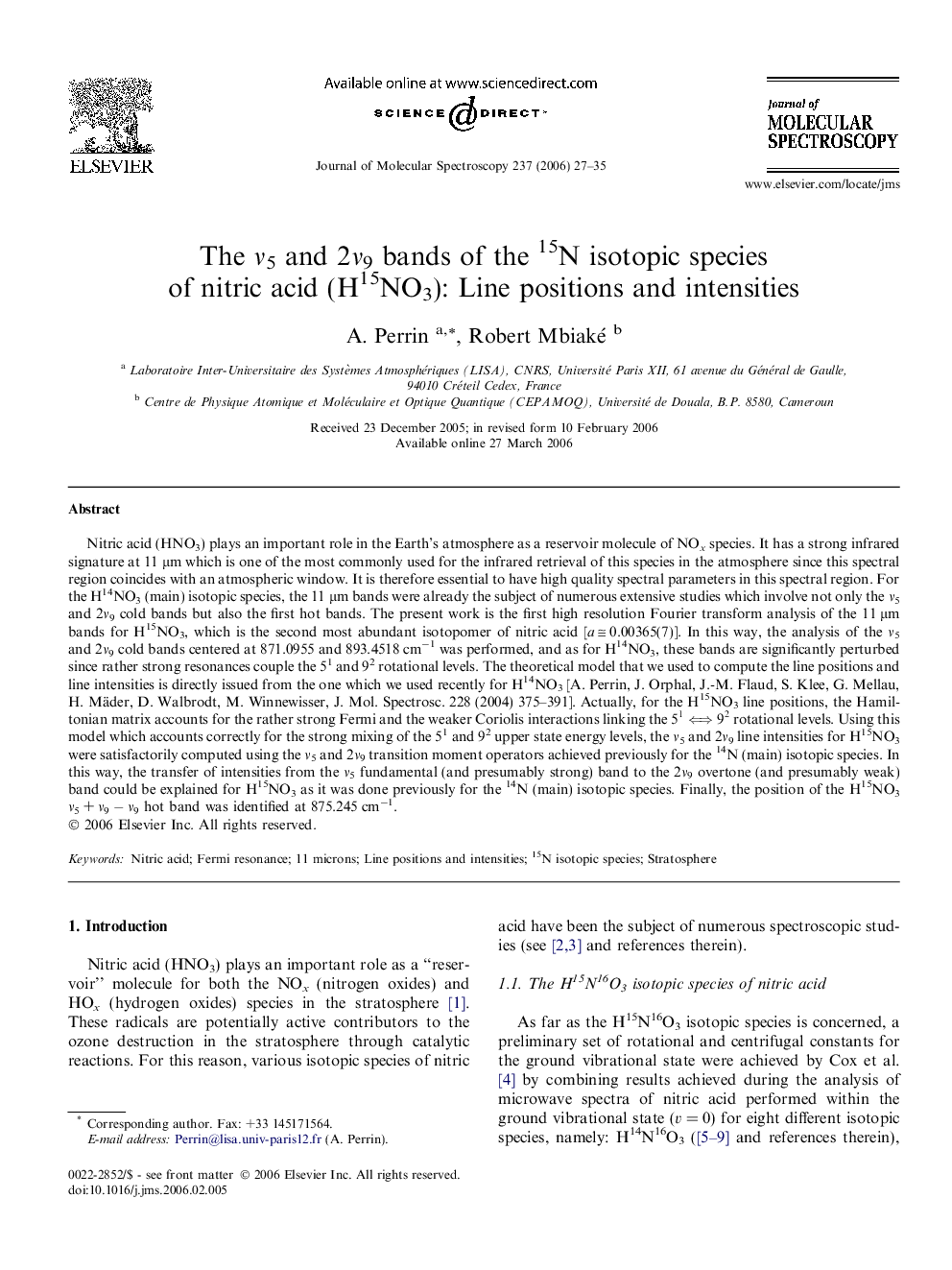| کد مقاله | کد نشریه | سال انتشار | مقاله انگلیسی | نسخه تمام متن |
|---|---|---|---|---|
| 5416036 | 1393792 | 2006 | 9 صفحه PDF | دانلود رایگان |
عنوان انگلیسی مقاله ISI
The ν5 and 2ν9 bands of the 15N isotopic species of nitric acid (H15NO3): Line positions and intensities
دانلود مقاله + سفارش ترجمه
دانلود مقاله ISI انگلیسی
رایگان برای ایرانیان
کلمات کلیدی
موضوعات مرتبط
مهندسی و علوم پایه
شیمی
شیمی تئوریک و عملی
پیش نمایش صفحه اول مقاله

چکیده انگلیسی
Nitric acid (HNO3) plays an important role in the Earth's atmosphere as a reservoir molecule of NOx species. It has a strong infrared signature at 11 μm which is one of the most commonly used for the infrared retrieval of this species in the atmosphere since this spectral region coincides with an atmospheric window. It is therefore essential to have high quality spectral parameters in this spectral region. For the H14NO3 (main) isotopic species, the 11 μm bands were already the subject of numerous extensive studies which involve not only the ν5 and 2ν9 cold bands but also the first hot bands. The present work is the first high resolution Fourier transform analysis of the 11 μm bands for H15NO3, which is the second most abundant isotopomer of nitric acid [a â
 0.00365(7)]. In this way, the analysis of the ν5 and 2ν9 cold bands centered at 871.0955 and 893.4518 cmâ1 was performed, and as for H14NO3, these bands are significantly perturbed since rather strong resonances couple the 51 and 92 rotational levels. The theoretical model that we used to compute the line positions and line intensities is directly issued from the one which we used recently for H14NO3 [A. Perrin, J. Orphal, J.-M. Flaud, S. Klee, G. Mellau, H. Mäder, D. Walbrodt, M. Winnewisser, J. Mol. Spectrosc. 228 (2004) 375-391]. Actually, for the H15NO3 line positions, the Hamiltonian matrix accounts for the rather strong Fermi and the weaker Coriolis interactions linking the 51â92 rotational levels. Using this model which accounts correctly for the strong mixing of the 51 and 92 upper state energy levels, the ν5 and 2ν9 line intensities for H15NO3 were satisfactorily computed using the ν5 and 2ν9 transition moment operators achieved previously for the 14N (main) isotopic species. In this way, the transfer of intensities from the ν5 fundamental (and presumably strong) band to the 2ν9 overtone (and presumably weak) band could be explained for H15NO3 as it was done previously for the 14N (main) isotopic species. Finally, the position of the H15NO3ν5 + ν9 â ν9 hot band was identified at 875.245 cmâ1.
ناشر
Database: Elsevier - ScienceDirect (ساینس دایرکت)
Journal: Journal of Molecular Spectroscopy - Volume 237, Issue 1, May 2006, Pages 27-35
Journal: Journal of Molecular Spectroscopy - Volume 237, Issue 1, May 2006, Pages 27-35
نویسندگان
A. Perrin, Robert Mbiaké,